So you want to eat “better” when it comes to red meat but where to start? Start here with our tips for How to Choose Quality Red Meat!
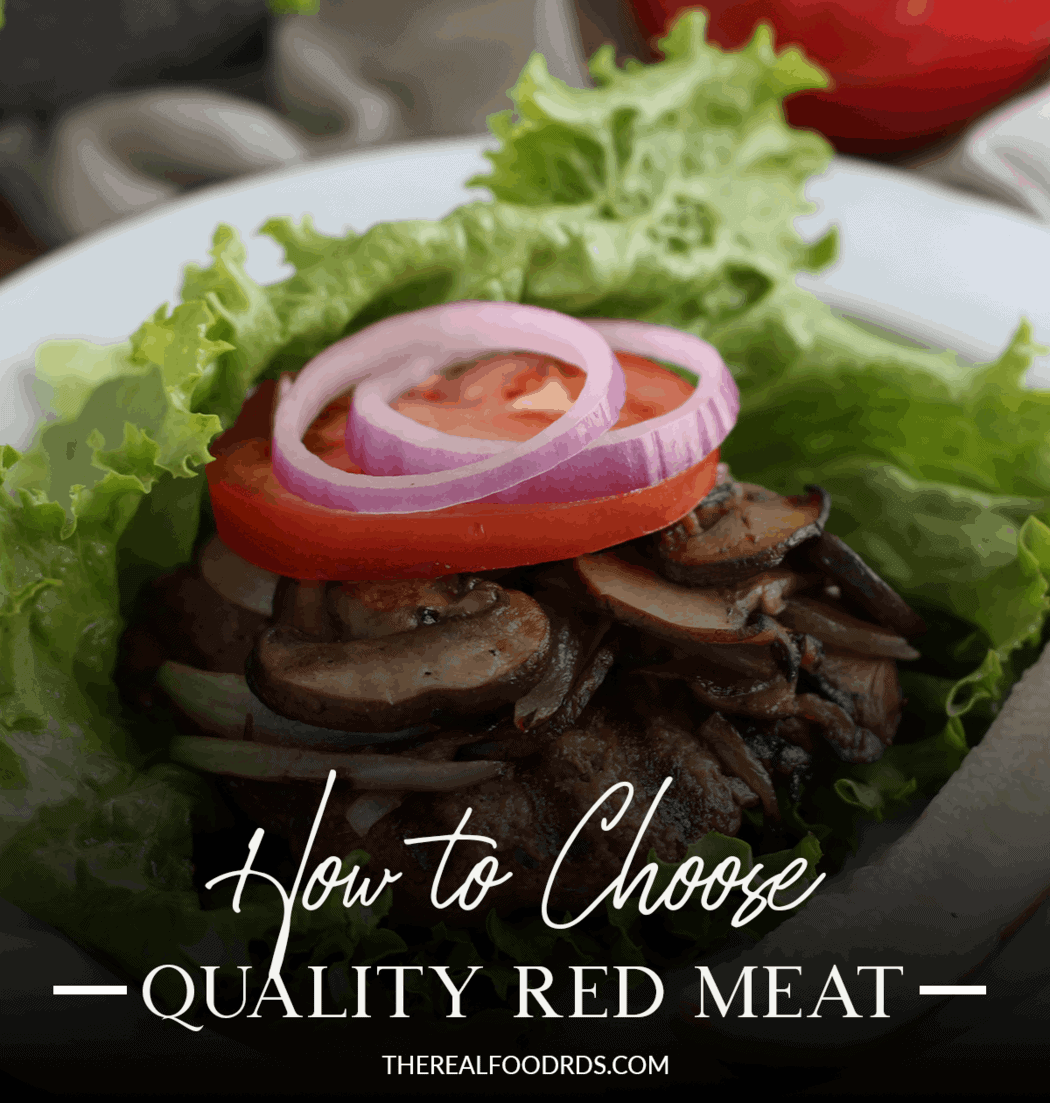
Welcome to the first post in our Real Food 101 Series where we talk about how to choose quality red meat. You might be surprised to see dietitians skipping the kale and going straight to the cow, but we’ve got a good reason. Red meat is one of the most vilified foods in the American diet and has been for years thanks in part to scary headlines about cholesterol and more recently, reports that raising cattle is going to be the undoing of the earth. Because of the complexity of both issues – nutrition and environmentalism – we’re not going to dive deep into either of them here right now. Instead, we’re giving you the “highlight reel” and distilling a large body of information into something that’s easy to digest and put into action in your own kitchen right away.
After all, we know you’re busy and we know that you look to us as Registered Dietitian Nutritionists, to wade through the science and sensational headlines and give you the straight scoop. So here it is, our take on how to choose quality red meat and why it’s better for your health, and more.
What Does “Quality” Even Mean?
The term “quality” is a pretty vague term just like the term “natural” is, so for all intents and purposes of this post and all of the ones to follow in our Real Food 101 Series, let’s take a look at our definition of Real Food because this is what we use to help determine our definition of “quality” when talking about how to choose quality red meat in this post:
“To us, Real Food is more than just organic – it is food that nourishes the body, is minimally processed, maintains its natural integrity and respects the dignity and health of the humans who produce it, protects animal welfare and is environmentally sustainable.”
– Jessica Beacom & Stacie Hassing, The Real Food Dietitians
This post contains affiliate links that will not change your price but will share some commission.
What Is Grass-Fed?
The term “grass-fed” means that a cow (or lamb, in the case of red meat) grazed on grasses during its lifetime. But that’s about all that it tells you. It doesn’t tell you how long they were fed grass as all cattle, even grain-fed cattle, start their lives on grass pasture, or if they were then “finished” with grain to fatten them before processing, it doesn’t tell you if they were allowed to roam freely outdoors in grassy pastures or whether they were given dried grasses and hay (forage) and kept in close confinement or how humanely they were treated from birth to death. Basically, it just says that the cow ate grass at some point.
However, before you throw your hands in the air and think it’s not worth opting for grass-fed red meat, hear us out. There are ways to know which grass-fed red meat is better (or even best) and which ones to be wary of, but it takes some sleuthing on your part. Hopefully, by the end of this post, you’ll have the tools you need to make the decision as to whether consuming grass-fed red meat is for you and if so, how to find it. But first, let’s look at the reasons why you might choose grass-fed red meat over its conventionally raised counterparts.
Get grass-fed beef and more delivered right to your door with ButcherBox
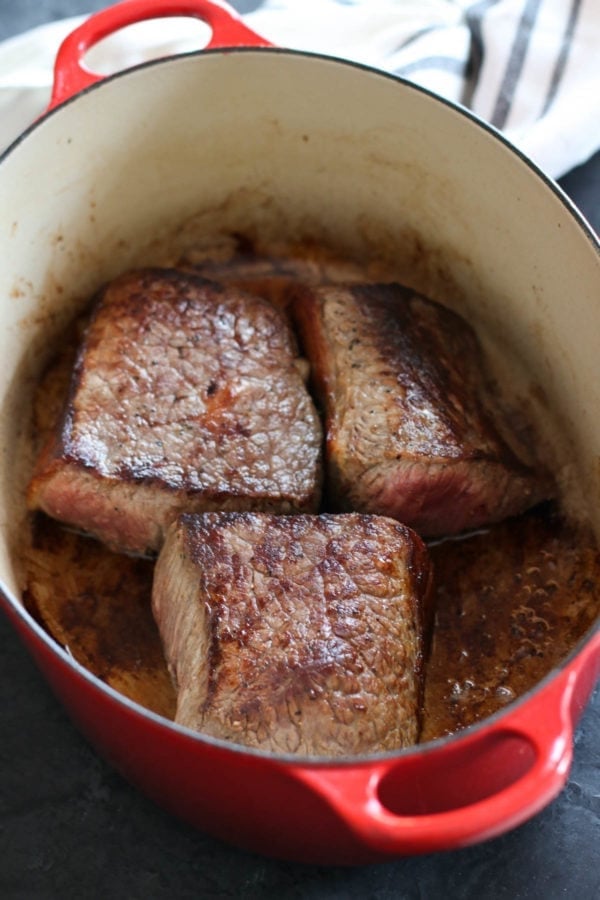
Why Choose Grass-Fed?
Choosing 100% grass-fed (and “grass-finished” or “grass-pastured”) and humanely raised red meat over grain fed-meat offers a host of health benefits including:1
- 2-4 times more omega-3 fatty acids
- Up to 3 times more conjugated linoleic acid (a special type of omega-6 fatty acid with anti-inflammatory properties)
- Lower total fat and saturated fat
- More favorable ratio of omega-3 to omega-6 fats
- More B vitamins
- More antioxidants (vitamin E and beta carotene)
Beyond the benefits to you, the eater, grass-fed animals enjoy important health benefits too since they are natural herbivores whose natural diet is grass (not grains). When ruminant animals (such as cows, goats, and sheep) are fed grains their health suffers and they’re at increased risk for infection, most notably E. coli. Adding to that is the fact that most corn and soy (unless the meat has been produced organically) are genetically modified which if you’re buying organic produce to avoid GMOs, you’ll want to take a closer look at the meat you eat as well.
In addition to your health and the health of the cows, pasture-based management of animals (i.e. grass-feeding, grass-finishing along with ample access to pasture to roam) is better for the environment for a few reasons:
- Animals raised in confined feeding operations are subject to overcrowding, unnatural conditions (excessive waste build-up, concrete slabs, no true outdoor access, or room to move). These overcrowded conditions coupled with increased susceptibility to infection necessitate the widespread use of antibiotics.
- Concentrated areas of animal waste are not allowed to naturally decompose due to lack of sunlight, healthy soil microbes and insects, and the fact that there is just too much in one small area. Rather than being dispersed and allowed to decompose as it does in a pasture, this waste (and the antibiotics contained in it) can leach into the soil contaminating groundwater and create toxic streams of runoff that pollutes rivers, lakes, streams, and yes, even drinking water.
- Artificial growth hormones are given to animals to promote faster growth, faster turnover in feedlots, and the bigger, fattier cuts of meats that consumers demand at the lowest price possible.
Is Grass-Fed Better?
Unfortunately, we can’t make that call for you. Only you can decide, based on what you now know. We certainly feel that grass-fed and grass-finished red meat is the way to go and it’s the choice we make whenever we make grocery purchases. Considering the large and ever-growing body of research out there related to the benefits to humans, the animals, and the environment, it’s no wonder that the demand for grass-fed has increased 25-30% every year over the past decade.2
It doesn’t have to be all or nothing.
We’re not saying that to be healthy you HAVE to eat grass-fed meat, we’re suggesting an alternative to conventionally raised, grain-fed meat. If you’re on board, great! Let’s quickly talk about labels and how to choose quality red meat when at the store, ordering online or rubbing elbows with your local farmer down at the farmer’s market.
Better meat = Better recipes. Try ButcherBox today and get grass-fed beef (and more) delivered right to your door
What about Organic?
Seeing the “USDA Organic” label on your meat is great, but it only tells part of the story. Under organic standards, meat can be labeled organic if the animal received at least 30% of its diet from grass or dried forage. The remaining part of the diet, if comprised of grains, would have had to have been organic grains. Also, to be considered organic, the animal must not have received growth hormones or antibiotics (note: antibiotics are used in organic farming but only when absolutely necessary to save the life of a sick animal whom, after treatment, would no longer qualify as organic).
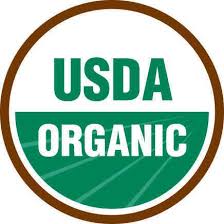
So, is organic bad then?
Absolutely not! It’s just one part of the story. Quality red meat can be both organic and grass-fed or just grass-fed as you’ll see next.
Labeling: What to Look for When Buying Grass-Fed Meat
Sadly, there is no one label, seal or stamp of approval that exists yet to help you easily discern which meat is from animals who were fed and finished on grass and/or humanely-raised. Don’t despair, there are still ways to get the info you need to make the best choice including:
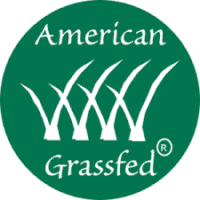
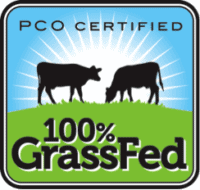
- Read the package label for information. Look at the labels it does contain and read the fine print. A few labels that are worth looking for include the “Certified Grass-Fed” stamp from the American Grassfed Association and the 100% Grass-Fed Certification from PCO Organic. Both are independent third-party certifiers since there are currently no government standards for grass-fed.
- Ask questions. Whether that’s face to face or over the phone with a local farmer or seeking out information on sourcing and production from the company’s website (try their FAQ or About pages, drop them an email or give them a call). The questions you don’t ask will remain unanswered. And in the case of many small farms and producers, they may be doing it all right, but can’t afford the certification process to get the stamp for their label.
Not sure what to ask your local farmer? Try some of these questions to get the conversation started:
- Can you tell me about how the animals are raised, what they are fed, what they eat during the winter months?
- When the animals aren’t grazing on grass, what type of feed/forage or grains are given and if so, how much of the diet is grass vs. grains?
- Are your animals consuming only grass throughout their lifetime, right up until processing?
- Can the animals freely access the outdoors whenever they please? If so, how much space do they have to roam? Acres? Square feet?
- Ask about organic feed if that’s a concern for you (and we think it should be) or if pesticides are used on the grasses or forage they eat. A good question would be, “Are the forage and grain (if any) that you feed certified organic or grown organically, but without an official certification?
- Can you tell me about the health of the herd and whether antibiotics are used regularly or only when it’s a matter of saving or improving the life of an animal?
And don’t be afraid to ask to visit the farm. A farmer or rancher with happy, well cared for, healthy animals with good living conditions will be glad to show you around.
- Find a trusted online source. While the idea of buying meat online rather than from the store may seem crazy, it’s actually a good way to get the product you desire for a fair price and in a convenient way. Of course, we’d love for you to buy local, but sometimes it’s not an option. The good thing is that many online meat delivery services are already sourcing their meat from small family farms. So while they may not be local to you per se, they’re local to someone and those farmers – along with the entire network of small and organic farms – benefit every time you “vote” with your grocery dollars. In case you’re wondering, our go-to for grass-fed, humanely raised beef is Butcher Box. They make it easy to choose quality red meat.
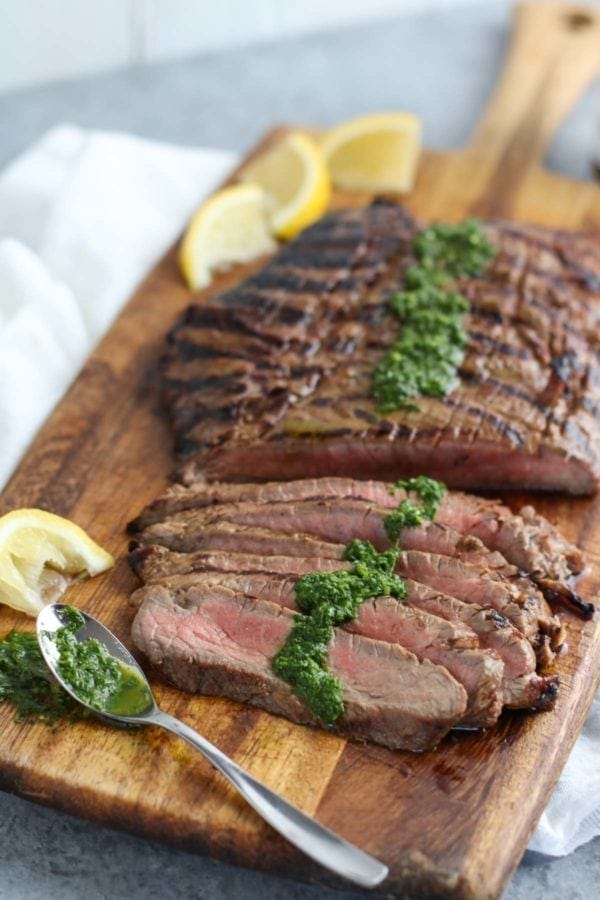
Grass-Fed on a Budget
So now you know the benefits of grass-fed meat and what to look for when buying it. You probably already knew coming into this that along with the benefits comes a higher price tag. We know, it can be hard to swallow when you compare the price of grass-fed to conventional side-by-side, but a lot goes into better quality meat and better treatment of animals. While we understand that this can be a barrier for some, we have a few tips to help ease the squeeze on your pocketbook when it comes to choosing quality red meat:
- Mind your portions. When planning meals or serving yourself and steak, keep in mind that a reasonable portion of meat is 3-4 ounces after cooking. By cutting back on your portion of meat and filling the rest of your plate with plant-based food not only are you making a healthy choice, but you’re also being mindful of your budget as meat costs significantly more than fruits and vegetables. One of our favorite ways to do this is a big salad topped with a few slices of this Balsamic Flank Steak.
- Go with ground beef. Ground beef is not only one of the most economical ways to enjoy quality red meat, but it’s also one of the most versatile. It can be used in a variety of dishes like Stovetop Sloppy Joes, Shepherd’s Pie with Sweet Potato Topping, or these BBQ Meatloaf Muffins. They’re all freezer-friendly which makes them perfect for batch cooking whenever you take advantage of sales to stock up on grass-fed ground beef.
- Opt for leaner, less expensive cuts of meat. While nothing quite compares to a big, juicy ribeye steak, let’s not overlook some of the most nutritious cuts of meat. We’re talking about those lean cuts (sirloin, flank/skirt, round, London broil, etc.) that have less intramuscular fat marbling so you’re only paying for the meat, not the fat you’ll cook off, and those with plenty of connective tissue that with low and slow cooking will break down into a readily usable source of collagen and amino acids. To make use of these less expensive cuts, try our Slow Cooker BBQ Beef, Slow Cooker Beef Stew with Root Vegetables and Slow Cooker Beef Barbacoa. Or try our 5 Easy Steak Marinades to add flavor while tenderizing those leaner cuts.
- Buy in bulk or share with friends. Stocking up when meat is on sale, taking advantage of special offers from online meat delivery services like Butcher Box or going in with other families on the purchase of a whole or half animal from a local farm are all great ways to get quality red meat on your table for less money.
What to do if you can’t go grass-fed?
You do your best. If you can choose quality red meat more often than not by employing the tips we shared above then our suggestion is to enjoy red meat less often and when you do, choose the leanest cuts you can. Antibiotic, hormone, and pesticide residues are all stored in the fat of the animal so by choosing leaner cuts you’ll be reducing your exposure to the chemicals.
Pin this & share the love!
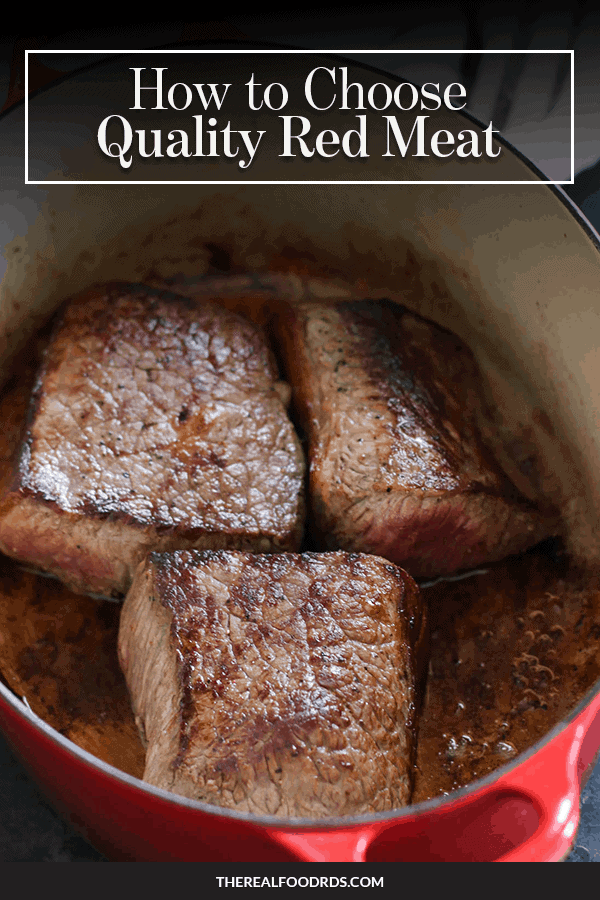
This post may contain affiliate links which won’t change your price but will share some commission.
All photos and content are copyright protected. Please do not use our photos without prior written permission. If you wish to republish this recipe, please rewrite the recipe in your own unique words and link back to the source recipe here on The Real Food Dietitians so credit is given where credit is due. Thank you!
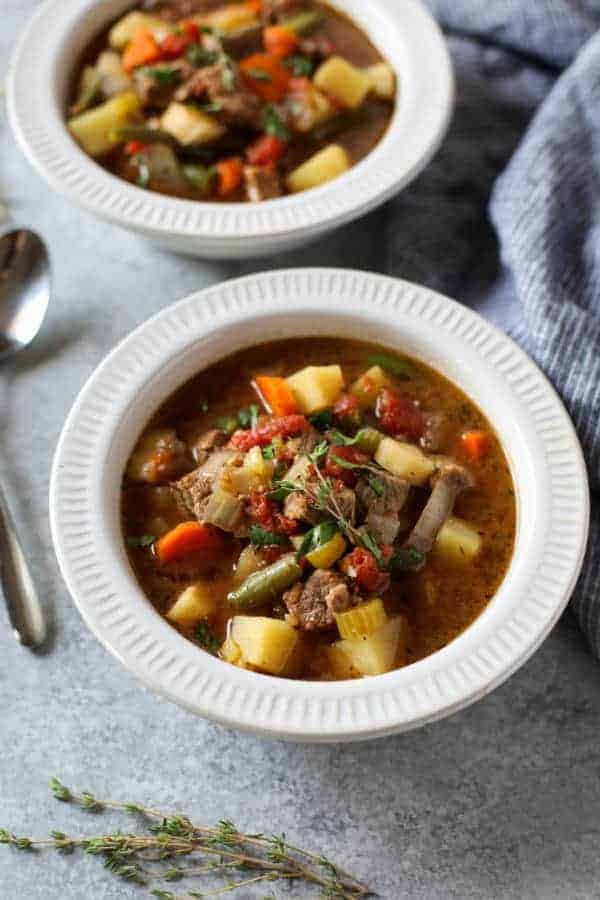


This post was so helpful! I’m excited for your new Real Food 101 Series. Just ordered my first order from Butcher Box. I’ve heard so many great things with their meat. Thanks for all the important information.
We’re so glad you enjoyed this post and gave Butcher Box a try!
I agree that it is important to find quality meat. I subscribed to Butcher Box for 2 months. My first shipment came and while the meat was mostly frozen, it had begun to thaw. My second shipment arrived without ice and completely thawed and warm. I contacted Butcher Box who offered to reship my order. I cancelled my subscription though because generally I will not be home when it arrives and I’m concerned about keeping it the right temperature through the shipping and handling time. In addition, I don’t think it is a good idea to refreeze the meat once it’s completely thawed.
Have you had any problems with Butcher Box? Are there other companies you recommend?
Hi Valerie,
Thanks for your comment. A few years ago I did have a Butcher Box arrive mid-summer that was thawed but since then they have changed their packaging (they did away with the cooler bags and opted for more eco-friendly materials) and they’ve all arrived very frozen – sometimes with dry ice and other times without.
Thrive Market and Organic Prairie both offer grass-fed meats for sale online and I’ve also had good luck with those.